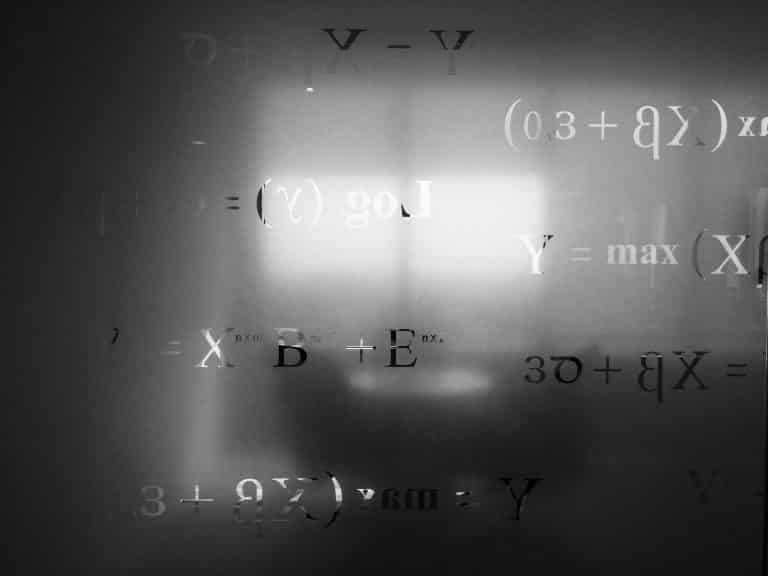The internet and machine learning have transformed our lives. Almost everyone’s life has been impacted by this notion, whether they are computer scientists at a large corporation or a thirteen-year-old smartphone user. If you’ve heard of the term algorithm before, you’re already familiar with one key feature of this.
Artificial intelligence includes machine learning, which is the study of computer algorithms and the steady improvement of those algorithms over time as more data and experience become available. It’s based on a foundation of statistics, discrete math, calculus, probability, and linear algebra, all of which are critical.
Where Do Mathematical Calculations Fit Into Today’s Technological Workforce?
Making the optimal choice of the algorithm takes the careful evaluation of a variety of factors, including accuracy, training time, parameter utilization, and an awareness of the bias-variance tradeoff. Machine learning’s five pillars constitute the foundation for these parameters. The following are the pillars:
- Statistics
- Linear Algebra
- Probability theory
- Calculus
- Discrete mathematics
Also Read: Difference Between Computer Science And Data Science
Statistics
Statistics are the foundation of machine learning studies. Numerical data collection and analysis are practices and sciences that are used to derive representations for the population as a whole or a specific sample within the population.
This allows you to make logical inferences from any set of facts. In artificial intelligence, this is a critical aspect in the growth and development of any company.
- Descriptive statistics
- Inferential statistics
Descriptive Statistics
Mean, median, and mode are the measuring tools required in this category. Variance, standard deviation, and range are necessary variability tools.
Data is put to use in the following ways:
- Distributing and compiling information for the intended audience
- Using a modest number of instances
- It is possible to show the outcome using visual representations.
Statistical Inference
Analyzing variance and sampling distributions are only a few examples of the measuring methods employed.
Data is put to use in the following ways:
- Using a small data sample to make educated guesses about the behavior of a large population
- Implemented across a wide number of devices
- Statistics such as probability scores are employed to display the outcome.
- Predicting future results by experimenting and evaluating current ones
- It’s capable of making hypothetical forecasts based on data that hasn’t yet been collected.
Calculus
This area of mathematics aids in the optimization of algorithms by balancing their performance. Studying the pace at which quantities change over the full dataset is also beneficial. If you had trouble with calculus in college, you’ll be relieved to know that machine learning doesn’t require any knowledge of calculus in the first place.
The good news is that obtaining calculus online assistance will quickly reacquaint you with the subject’s fundamental structure and ideas.
The following subjects are essential if you want to succeed in machine learning’s calculus section:
- Calculus of differences and integrals
- Partially derivate financial products
- function for vector values
- slopes that change direction
After a few days of constructive study, you should be able to grasp and apply these ideas. For neural networks, you need also be familiar with gradient descent derivatives and backpropagation.
Linear Algebra
linear-algebra deals with linear equations and their representation in vector spaces and matrices. Math in the twenty-first century, as the saying goes.
For the development of key algorithms used to distribute and evaluate acquired data, it is critical to have a firm grasp of the linear equation formulation.
Here are a few examples of how linear algebra is used in machine learning:
Functions that cause loss of data
- Regularization
- Matrices of covariance
- Decomposition of a single value
- Operations based on a matrix
- Symmetric matrices
- Eigenvalues and eigenvectors
- Classification with help from a Venn diagram
Large datasets may be processed quickly and efficiently with linear algebra. Machine learning methods and complicated data structures cannot be used until this large-scale process is possible. You may start a career in data science and improve your data intuition using linear algebra.
Probability
This subject has most likely been on your mind since junior high or senior high school, if not longer. It’s the probability that an event will occur based on the number of favorable examples compared to all of the alternative causes.
For machine learning to be useful, the likelihood must be taken into consideration.
The formula is as follows:
P(Event) = Possible outcomes % Total Outcomes
Meaning:
P(Event) = Probability of different outcomes as a percentage of the total number of possible outcomes
The following are probability concepts to get familiar with:
- Conditional, joint, and marginal odds all come under the umbrella of probability
- Probability distribution curves
- Estimates of densities
- Estimates of the probabilities with the greatest degree of certainty
- Regression with the greatest possible degree of certainty
- Theorem of Bayes
Decisions must be taken in the actual world even though the information available is deficient. Regardless of how inadequate the evidence is, the projections must be right.
Using probability, we can measure uncertainty and draw inferences about what could happen. Probability and machine learning applications:
- Sampling
- Pattern recognition
- Developing specific algorithms
- Model evaluation
- Hyperparameter optimization
Discrete Maths
Integers are used to characterize data in computer science and to describe things and issues. Included here are things like computer algorithms and programming languages. Unless you opt to move into specific topics like machine learning, just discrete math basics will get you through.
- Graphical representations
- Compounding dilemmas
- Predictions based on specific information
Conclusion
It may take you a few months to grasp the aforementioned mathematical ideas, but once you do, you’re in for a wild trip. The data science business is expanding at a rapid pace, so having this background would be quite beneficial should you decide to pursue a career in this field.

